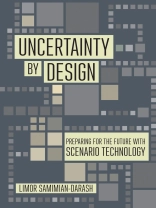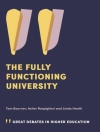In Uncertainty by Design Limor Samimian-Darash presents cases of the use of scenario technology in the fields of security and emergency preparedness, energy, and health by analyzing scenario narratives and practices at the National Emergency Management Authority in Israel, the World Health Organization’s Regional Office for Europe, and the World Energy Council.
Humankind has long struggled with the uncertainty of the future, with how to foresee the future, imagine alternatives, or prepare for and guard against undesirable eventualities. Scenario—or scenario planning—emerged in recent decades to become a widespread means through which states, large corporations, and local organizations imagine and prepare for the future.
The scenario technology cases examined in Uncertainty by Design provide a useful lens through which to view contemporary efforts to engage in an overall journey of discovering the future, along with the modality of governing involved in these endeavors to face future uncertainties. Collectively, they enable us to understand in depth how scenarios express a new governing modality.
Содержание
Introduction: Uncertainty, Scenarios, and the Future
1. Chronicity: The Problematization of Scenario Thinking
2. Narrative-Building: Imagining Plausible Futures
3. Exercising: Practicing the Unexpected
4. Subjectivation: Embracing Uncertainty
5. Simulations: Possibilities and Responses
6. Scenarios, Temporality, and Uncertainty
Conclusions and Critical Limitations
Epilogue: Scenarios and the Dynamics between Science and Imagination
Об авторе
Limor Samimian-Darash is Associate Professor in the Federmann School of Public Policy and Government at the Hebrew University of Jerusalem. She is the coeditor of Modes of Uncertainty.












